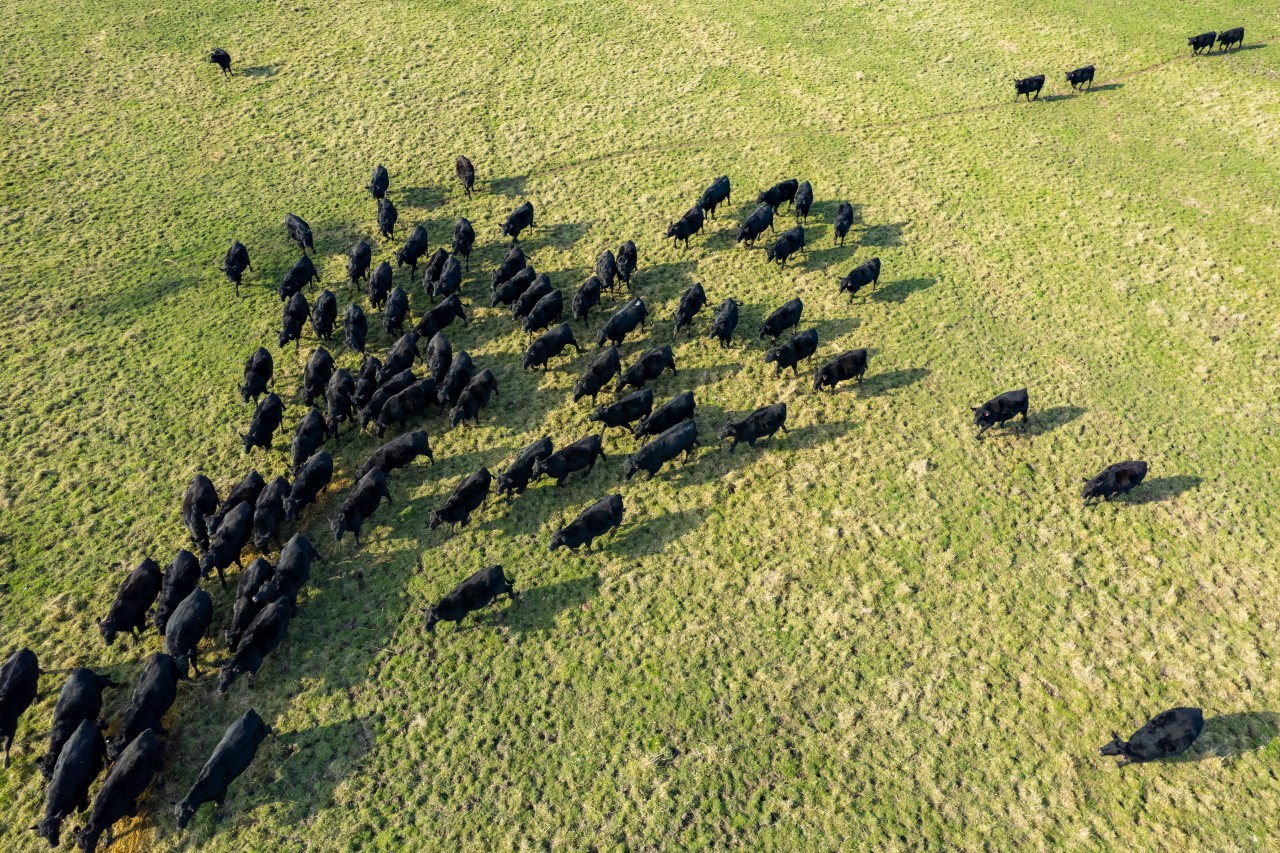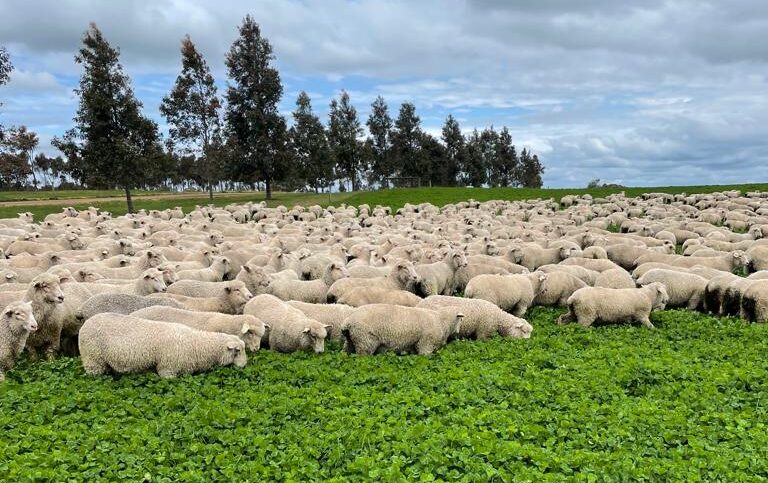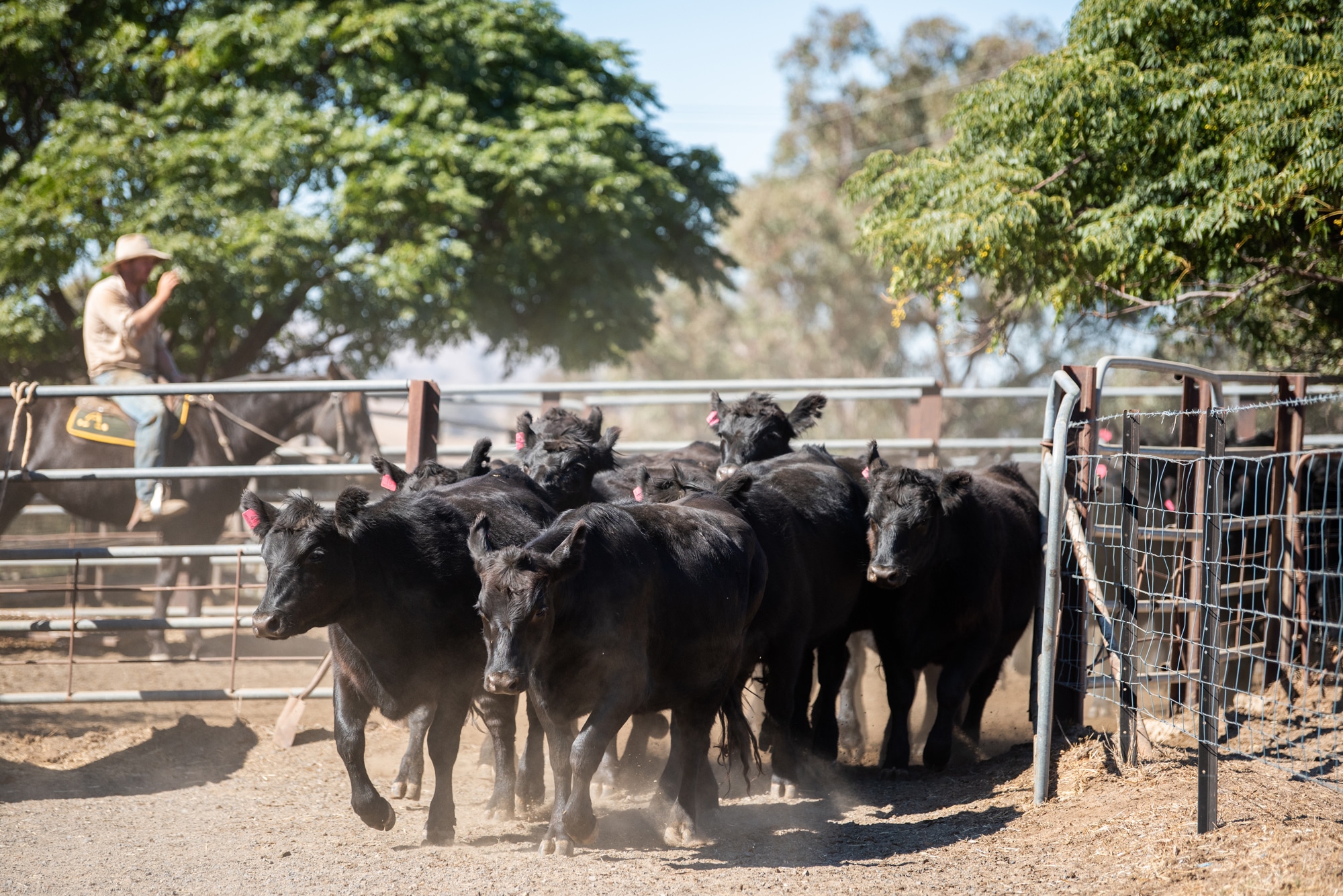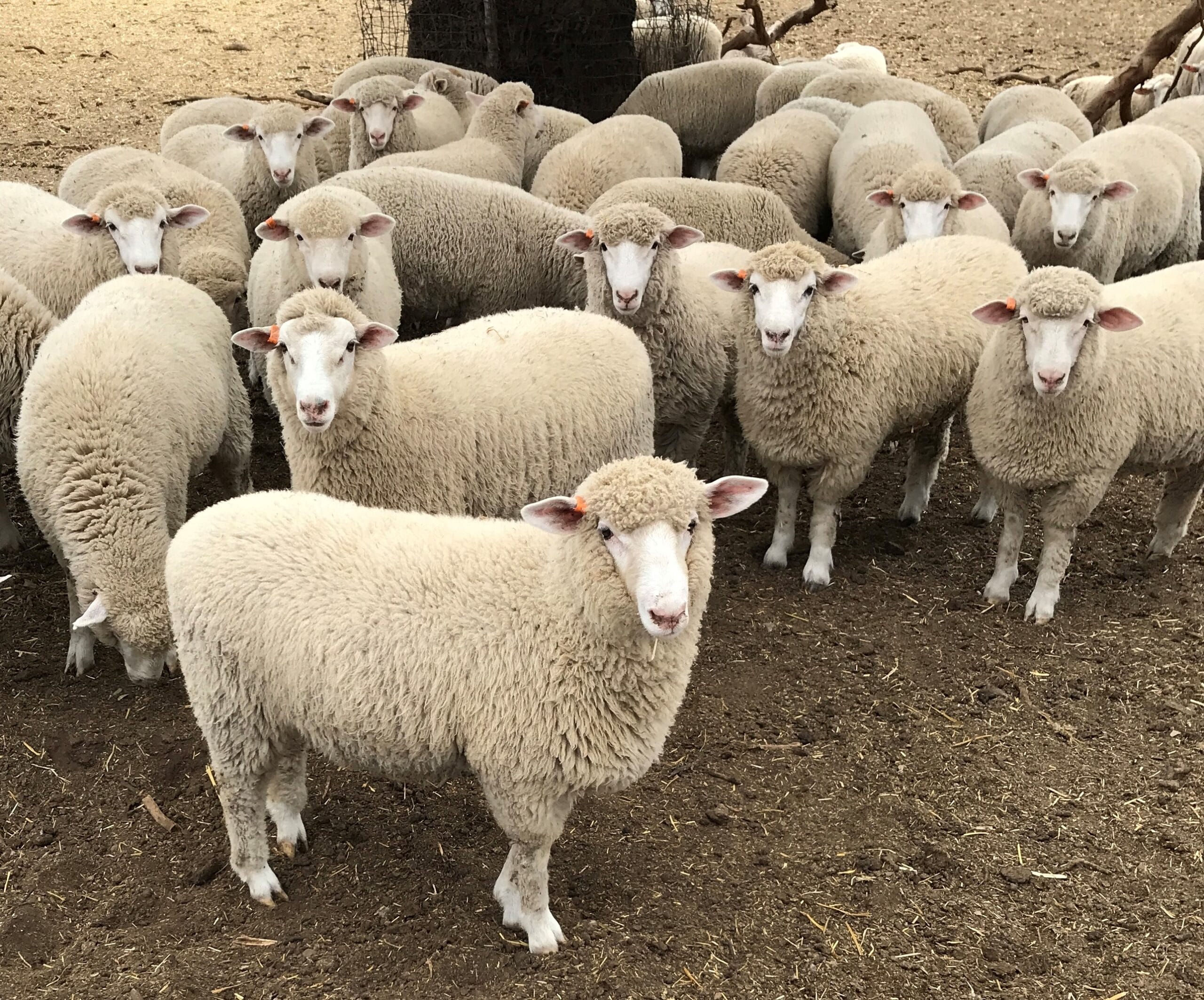Restocking in a high price beef cattle market?
Aggregate shares some insights
In-brief
- Beef producers should be looking to capture the potential profits that are on the table at current prices.
- At current prices, gross margins of $845 per head can be achieved on PTIC cows traded over a one-year period. Even if the market retracts by 15%, the gross margin is still well above break-even at $340 per head.
- There are opportunities to mitigate market risk by extending the number of years traded for breeding livestock and maximising the weight gain in growing animals.
What margins are available to beef producers who would like to take advantage of current cow prices?
Scenario 1: Purchasing livestock for weight gain
The assumptions and outcome of an analysis on purchasing steers or heifers are summarised in Table 1. In this scenario, cattle are purchased at 300kg liveweight for $1,680 a head (with cattle prices per kg at $5.60 per kg liveweight, incl. purchase costs). This purchase price isn’t at the top of the current cattle prices at this weight, however this is aimed at an average buy price. The effect buy price has on the outcomes of trades will be addressed later in this article.
At a weight gain of 180kg per head, and assuming the cattle market prices remain at the current level, the sale value is $2,208 ($4.60 per kilogram liveweight). This gives a gross margin of $348 per head, which is a return on investment of 21%.
Table 1. The assumptions and outcome of an analysis assessing cattle for weight gain in the current market.
| At current market | Steer/Heifer |
|---|---|
| Years Run | 1 |
| Annual Death Rate | 2% |
| Purchase Price ($/Hd) | $1,680 |
| Direct Cost ($/Hd) | $25 |
| Selling Cost (%) | 7% |
| Weight Gain (kg lwt/Hd) | 480 |
| Sale Price ($/kg lwt) | $4.60 |
| Sale Price ($/Hd) | $2,208 |
| Gross Margin ($/Hd) | $348 |
| Return on Investment | 21% |
How will any future downside in the market affect this result?
We cannot predict the future of the market with any certainty, however when assessing a trade opportunity producers should consider the possible downside and how far the market would need to fall before a trade is no longer feasible. Table 2 provides the gross margin per head for various sale and purchase prices. All other assumptions including weight gain and costs remain the same as scenario 1.
| Sale Price ($/kg liveweight) | |||||
|---|---|---|---|---|---|
| $4.6 | $4.4 | $4.2 | $4.0 | ||
| Purchase Price ($/kg lwt) | $5.40 | $408 | $319 | $230 | $141 |
| $5.50 | $378 | $289 | $200 | $111 | |
| $5.60 | $348 | $259 | $170 | $81 | |
| $5.70 | $318 | $229 | $140 | $51 | |
How can producers mitigate the risk of any future downside in the market?
Trades with a higher weight gain means the influence of purchase price on the total gross margin is reduced, giving you the estimated profit per cow in Australia. Table 3 provides the gross margin per head for the same trade in scenario 1, but at varying levels of weight gain and different reductions from the current market. If the weight gain achieved in this trade decreased to 150kg per head, and if the market reverted by 10% (~$4.15/kg liveweight) the gross margin per head is marginal at $28 per head. However if a weight gain of 210kg is achieved, the gross margin per head would be $259. At current margins, it is important that producers take steps to ensure they meet their target weight gains when trading cattle.
Table 3. The gross margin per head for the trade in Scenario 1 at different levels of weight gain and different levels of reduction from the current market. Green cells indicate a gross margin that would yield above 20% return on investment, yellow cells indicate a gross margin that will yield between 15% and 20%, the red is below 15% ROI. Weight gain (kg liveweight per head) 210 180 150 Reduction from current market 5% $368 $246 $124 10% $259 $143 $28 15% $150 $40 -$69
| Weight gain (kg liveweight per head) | ||||
|---|---|---|---|---|
| 210 | 180 | 150 | ||
| Reduction from current market | 5% | $368 | $246 | $124 |
| 10% | $259 | $143 | $28 | |
| 15% | $150 | $40 | $-69 | |
Scenario 2: Purchasing PTIC cow with calf at foot
The assumptions and outcome of an analysis on purchasing a PTIC cow are summarised in Table 4. In this scenario, the cow is purchased for $2,500.
Assuming prices remain at current levels, the calf is valued at $5.70 per kilogram liveweight at 220kg. The cow is re-joined and sold a year from purchase as a PTIC cow for the same value the cow was originally purchased for.
The total gross margin per head for this trade is $846, which is a return on investment of 34%. This margin represents huge opportunity for those who have surplus pasture and would provide a return on investment well above the cost of capital.
Table 4. The assumptions and outcome of an analysis assessing purchasing PTIC in the current market.
| At current market | PTIC Cow |
| Years Run | 1 |
| Annual Death Rate | 2% |
| Purchase Price ($/Hd) | $2,500 |
| Direct Cost ($/Hd) | $40 |
| Selling Cost (%) | 7% |
| Cow Sale Price ($/Hd) | $2,500 |
| Calf Sale Weight (kg liveweight/Hd) | 220 |
| Calf Sale Price ($/kg liveweight) | $5.70 |
| Calf Sale Price ($/Hd) | $1,254 |
| Gross Margin ($/Hd) | $846 |
| Return on Investment | 34% |
How will any future downside in the market affect this result?
To test the influence of future prices on the same trade, scenario 1 was adjusted so the sale value of the entire unit is reduced by 15% (Table 5). The trade would then yield a total gross margin per unit of $338, which is a return on investment of 14%. While this is a significant reduction in return on investment compared to the scenario at the current market, the gross margin per head is still well above break even. As the return on investment starts to approach these levels, producers that are only able to access a high cost of capital will need to consider options to mitigate the risk, however the market needs to fall a considerable way before this scenario becomes marginal.
Table 5. The adjustment to sale price and gross margin per head for scenario 1 at a 15% reduction in prices.
| At 15% below current market | PTIC Cow |
| Cow Sale Price ($/Hd) | $2,125 |
| Calf Sale Weight (kg liveweight/Hd) | 220 |
| Calf Sale Price ($/kg liveweight) | $4.85 |
| Calf Sale Price ($/Hd) | $1,066 |
| Gross Margin ($/Hd) | $338 |
| Return on Investment | 14% |
How can producers mitigate the risk of any future downside in the market?
In each of the scenarios analysed, the trade has only been considered over one year. Purchasing breeding livestock at a younger age enables the option to keep them on hand longer, which will increase the total gross margin the trade will yield through more calves produced and sold.
If the market did retract from current prices, having the option to extend the trade over multiple years will mitigate this risk. Table 6 demonstrates the sensitivity of the gross margin of the PTIC cow that was analysed in the previous two scenarios to two variables; the number of years the trade is run over and the decrease in market value.
Subsequent calves reared still achieve the same weight and $5.70/kg liveweight represents the current market, however as the cow’s value is decreased in table 6, the calf value is decreased by the same percentage.
At a 20% reduction from current market values over a 1-year period, the gross margin per head is $169. If the same trade were extended to 5 years, even with a 20% reduction from the current market, the gross margin per head would increase to $808.
Table 6. The gross margin per head for the PTIC trade in Scenario 2 over a different number of years run, and different levels of reduction from the current market. Green cells indicate a gross margin that would yield above 20% return on investment, yellow cells indicate a gross margin that will yield between 15% and 20%, the red is below 15%.
| Years Run | ||||
|---|---|---|---|---|
| 5 | 3 | 1 | ||
| Reduction from current market | 5% | $1,090 | $1,075 | $677 |
| 10% | $996 | $965 | $508 | |
| 15% | $808 | $747 | $169 | |
Conclusion
At current cattle prices, there is huge opportunity for beef producers to capitalise on surplus pasture. With the cattle market currently on the rebound and the supply glut coming to an end, there is no better time than now for producers to make the most of cattle prices in NSW.
Purchasing PTIC cows with calves at foot currently represents better value than trading animals for weight gain in terms of return on investment. However, provided producers hit weight gains above 150kg liveweight there is still opportunity to trade steers and heifers for weight gain.
Producers should consider ways to mitigate the market risk in their trades, including extending the trade over more years for breeding livestock and maximising the weight gain in steers and heifers.
Author
Aggregate Consulting is an agricultural consultancy business based in Wagga Wagga in southern NSW.







